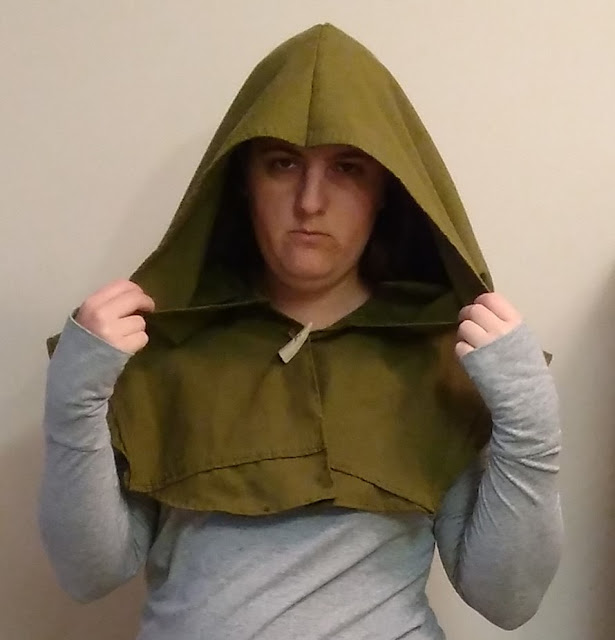Loonatic's Favorite Off-Brand High Fantasy Films
The high fantasy genre has a long history, with a lot of classic books and movies attached. Many films have etched themselves into the firmament of medieval fantasy, with epics such Lord of the Rings and Game of Thrones. However there are many lesser-known movies and cult classics that are well worth watching, each with their own re-imagining of medieval settings, characters, and themes.
Dragonslayer (1981)
The eighties left behind a lot of odd little high fantasy films. Dragonslayer is one that many have forgotten, but it remains a truly good film well worth a viewing. As you might expect, the story is about the slaying of a dragon that has been terrorizing the land. Young Galen is a magician's apprentice dragged into the quest, who must brave unexpected trials and risks to complete his mission. On the surface, it seems like pretty standard fare.
But without giving too much away for a decades-old film, let's just say that things aren't always what they seem and the story doesn't quite follow the formula you would expect. Strangely enough, it's actually kind of gritty, and tells a story that seems like it actually could have happened in the distant past. Magic, legendary weapons, and dragons aside, this down-in-the-mud approach is novel enough to make it a memorable addition to the genre.
For a project funded by Kickstarter, this is a pretty impressive set of movies. The acting, setting, and production value are lightyears beyond most Syfy-channel-type movies. It was a clever move for the makers to use the dramatic backdrops of Utah for their setting, which melds with the excellent props and minimal CGI to form a believable new world for these characters to roam. For high fantasy, it does an incredible job of making you care about the characters. You look at Aragorn and Gimli and Legolas and think, yeah they'll be fine. But these characters are fragile and largely human. Every time you think they're actually doing all right, the plot gut-punches them, and you really do wonder how they're going to get out of trouble.
Princess Mononoke (1997)
Like most Studio Ghibli, there's a lot going on in this well-crafted film. Ashitaka, the prince of an exiled people, is himself exiled when his people are attacked by a boar god turned demon. Cursed by the dying boar's touch, he embarks on a quest to understand the source and nature of his affliction. Along the way he meets a cast of characters in the middle of a war for the land. Lady Eboshi is defending her rising settlement while San the wolf princess protects the forest, and the Emperor's emissary Jiko plots against them both. None of their actions are entirely pure or their motives truly wrong, but together they must thwart the killing of a god, remove a curse, and come to a new equilibrium.
At first glance, this doesn't seem to belong on this list. Most high fantasy borrows heavily from the Middle Ages of Europe, dealing with the feudalism, holy quests, chivalry, and assorted perils of the period. High fantasy is also marked by it's inclusion of magic, mythical creatures, and the supernatural. But if you just shift the location and adjust the time period slightly, you can find all of those things in Princess Mononoke. Set in Japan in the Muromachi period (between 1300s and 1500s), the timing and themes correspond to late in Europe's Middle Ages. Cannons notwithstanding, there is plenty of swordplay, siege warfare, honor, questing, and fantastical creatures to merit classification in the high fantasy realm.
Dungeons and Dragons: Wrath of the Dragon God (2005)
All right, I guess that besides Lord of the Rings you can't get any more on-brand than Dungeons and Dragons. I make this exception because it's pretty obscure, and actually is truer to the formula of D&D than the movie Dungeons and Dragons (2000). In the kingdom of Izmir, peace is threatened with the return of the undead sorcerer Damodar and the rise of a dragon god who laid waste to ancient civilizations. To defeat them, the Lord Berek and his wife, the mage Melora, attack the problem on two fronts. He seeks to recover an ancient artifact with a band of adventurers, while she fights a curse and learns the secrets of imprisoning a god.
This made-for-television film clearly had to work with a much smaller budget than it's sort-of prequel Dungeons and Dragons. The heavy CGI of Dungeons and Dragons is replaced some brief and comical glimpses at dragons and liches. It's still better than you'd think. This hero's quest is different enough from the typical formula that it makes it interesting. The protagonist Berek isn't a young man trying to make a name for himself and win a fair lady. He's had his heyday, and seriously questions if he's capable of completing his mission. He and Melora have had a steady marriage and an equal partnership, and though she is sometimes in distress she doesn't tolerate being a helpless damsel-in-distress stick figure. All the characters play archetypes from the D&D franchise. This may box the characters in at times, but it also promotes the idea of teamwork and camaraderie, as well as the understanding that everyone can be important in their own way. Not a bad message for a genre well-known for its Chosen Ones.
Dragonslayer (1981)
The eighties left behind a lot of odd little high fantasy films. Dragonslayer is one that many have forgotten, but it remains a truly good film well worth a viewing. As you might expect, the story is about the slaying of a dragon that has been terrorizing the land. Young Galen is a magician's apprentice dragged into the quest, who must brave unexpected trials and risks to complete his mission. On the surface, it seems like pretty standard fare.
Mythica (2014-2016)
Mythica is a series of five films (A Quest for Heroes, Darkspore, Necromancer, Iron Crown, and Godslayer) that constitute a fairly recent addition to the high fantasy genre. In A Quest for Heroes, crippled slave Marek is fascinated by magic and sees it as her gateway to freedom. One day, as everything seems to turn against her, she discovers that she has a terrifying innate magic which she cannot control, forcing her to flee. Cast adrift, she is determined to forge her own destiny as an adventurer, and so takes up a fool's quest with the aid of fellow outcasts. Through trials and friendships she rises from humble beginnings is drawn into a struggle to save the world. The series draws heavy inspiration from Dungeons and Dragons, and has all the markers of high fantasy.
For a project funded by Kickstarter, this is a pretty impressive set of movies. The acting, setting, and production value are lightyears beyond most Syfy-channel-type movies. It was a clever move for the makers to use the dramatic backdrops of Utah for their setting, which melds with the excellent props and minimal CGI to form a believable new world for these characters to roam. For high fantasy, it does an incredible job of making you care about the characters. You look at Aragorn and Gimli and Legolas and think, yeah they'll be fine. But these characters are fragile and largely human. Every time you think they're actually doing all right, the plot gut-punches them, and you really do wonder how they're going to get out of trouble.
Princess Mononoke (1997)
Like most Studio Ghibli, there's a lot going on in this well-crafted film. Ashitaka, the prince of an exiled people, is himself exiled when his people are attacked by a boar god turned demon. Cursed by the dying boar's touch, he embarks on a quest to understand the source and nature of his affliction. Along the way he meets a cast of characters in the middle of a war for the land. Lady Eboshi is defending her rising settlement while San the wolf princess protects the forest, and the Emperor's emissary Jiko plots against them both. None of their actions are entirely pure or their motives truly wrong, but together they must thwart the killing of a god, remove a curse, and come to a new equilibrium.
At first glance, this doesn't seem to belong on this list. Most high fantasy borrows heavily from the Middle Ages of Europe, dealing with the feudalism, holy quests, chivalry, and assorted perils of the period. High fantasy is also marked by it's inclusion of magic, mythical creatures, and the supernatural. But if you just shift the location and adjust the time period slightly, you can find all of those things in Princess Mononoke. Set in Japan in the Muromachi period (between 1300s and 1500s), the timing and themes correspond to late in Europe's Middle Ages. Cannons notwithstanding, there is plenty of swordplay, siege warfare, honor, questing, and fantastical creatures to merit classification in the high fantasy realm.
Dungeons and Dragons: Wrath of the Dragon God (2005)
All right, I guess that besides Lord of the Rings you can't get any more on-brand than Dungeons and Dragons. I make this exception because it's pretty obscure, and actually is truer to the formula of D&D than the movie Dungeons and Dragons (2000). In the kingdom of Izmir, peace is threatened with the return of the undead sorcerer Damodar and the rise of a dragon god who laid waste to ancient civilizations. To defeat them, the Lord Berek and his wife, the mage Melora, attack the problem on two fronts. He seeks to recover an ancient artifact with a band of adventurers, while she fights a curse and learns the secrets of imprisoning a god.
This made-for-television film clearly had to work with a much smaller budget than it's sort-of prequel Dungeons and Dragons. The heavy CGI of Dungeons and Dragons is replaced some brief and comical glimpses at dragons and liches. It's still better than you'd think. This hero's quest is different enough from the typical formula that it makes it interesting. The protagonist Berek isn't a young man trying to make a name for himself and win a fair lady. He's had his heyday, and seriously questions if he's capable of completing his mission. He and Melora have had a steady marriage and an equal partnership, and though she is sometimes in distress she doesn't tolerate being a helpless damsel-in-distress stick figure. All the characters play archetypes from the D&D franchise. This may box the characters in at times, but it also promotes the idea of teamwork and camaraderie, as well as the understanding that everyone can be important in their own way. Not a bad message for a genre well-known for its Chosen Ones.











Comments
Post a Comment